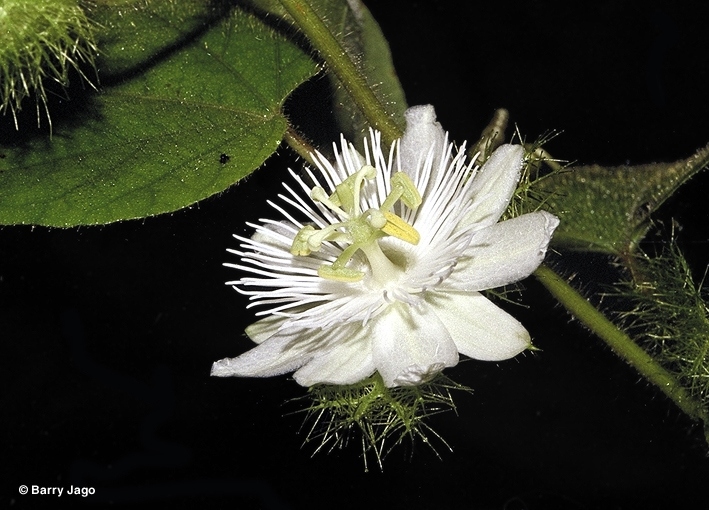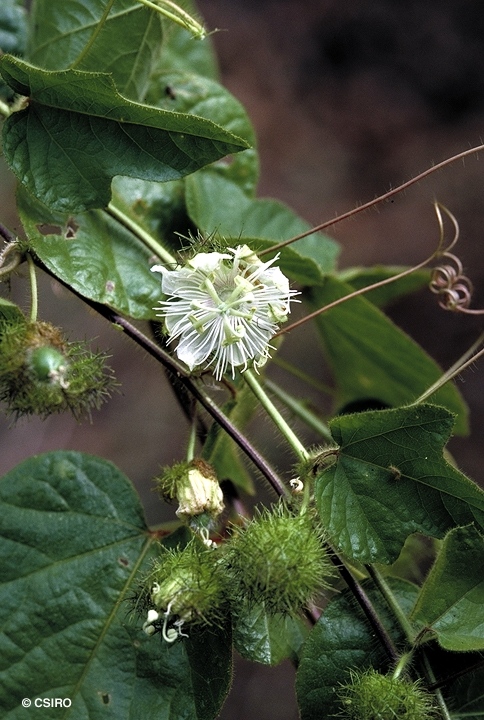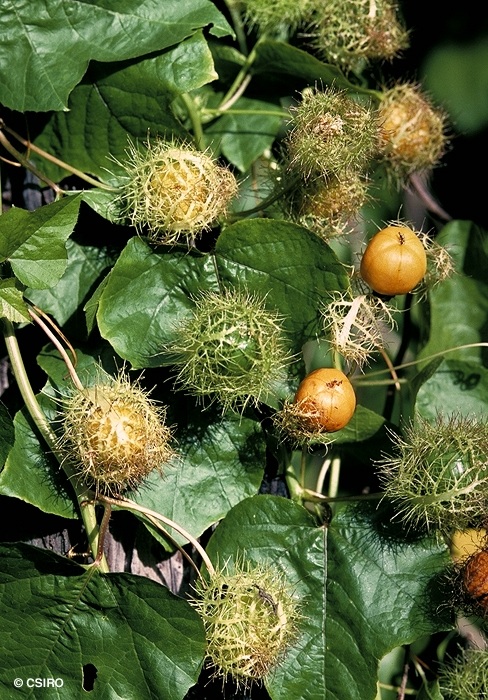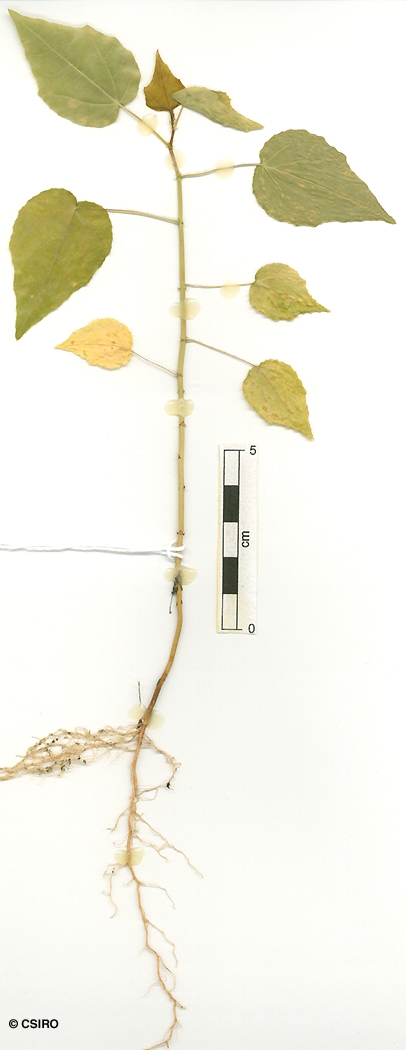Australian Tropical Rainforest Plants - Online edition
Passiflora foetida L.






Linnaeus, C. von (1753) Species Plantarum 2: 959. Type: Dominica, Martinique, Curacao; holo: ?.
Passion Flower; Mossy Passion Flower; Love in a Mist; Stinking Passion Flower; Wild Passionfruit
A slender vine not exceeding a stem diameter of 2 cm.
Leaf blades 3-lobed, blades about 6-10 x 5.5-9 cm, margins fimbriate with glandular hairs, petioles about 2-4 cm long, flattened on the upper surface, with glandular hairs along each edge. Upper and lower leaf blade surfaces clothed in pale-coloured erect hairs and scattered stalked glands with yellow tips. Stipules large, about 5-15 mm long, foliaceous, margins fimbriate with glandular hairs. Tendrils simple, unbranched, axillary. Leaves emit an unpleasant odour when crushed.
Flowers about 3-5 cm diam. Each flower subtended by 3 finely dissected fimbriate bracts about 2-4 cm long. Pedicles about 2.5-3 cm long. Sepals about 1-2 cm long, apices pointed. Petals about 1.5 cm long. Corona white to purple consisting of numerous thread-like processes. Ovary on a gynophore. Staminal filaments about 5 mm long, anthers about 6 mm long. Ovary hairy, about 3 mm long on a gynophore about 4-5 mm long. Styles about 7 mm long each ending in a globose stigma. Ovules numerous.
Fleshy opened fruits have a distinctive odour. Fruits ellipsoid or +/- globular, about 17 x 15 mm, completely enclosed in 3 large (40 x 30 mm) fimbriate bracts attached at the apex of a stalk about 4.5-5 cm long. Seeds about 20-25 per fruit, each seed flattened, about 4-5 x 3 mm, testa surface pitted. Each seed embedded in a translucent aril or sweet mucilage. Embryo white, about 3 mm long, cotyledons +/- orbicular, about 1.5-2 mm diam., longer and much wider than the radicle.
Cotyledons elliptic, about 9.5-12 x 7-9 mm, apex truncate to obtuse, base obtuse, midrib forking well below the apex. Petioles about 6-7 mm long. First pair of leaves ovate to cordate, margins sparsely toothed, petioles long. Stipules four or five, armed, tips glandular. At the tenth leaf stage: leaf blade cordate, apex acuminate and mucronate, base cordate, the lobes sometimes overlapping. Margins finely toothed or bristly with about 30-35 trichomes on each side. Stipules fimbriate, each lobe about 3-4 mm long and ending in a swelling or gland. Upper and lower leaf blade surfaces (particularly the latter) and petiole clothed in glandular hairs. Seed germination time 29 days.
An introduced species originally from the West Indies and South America, now pantropic in distribution. Occurs in WA, NT, CYP, NEQ, CEQ and southwards as far as north-eastern New South Wales. Altitudinal range in northern Australia from near sea level to 450 m. Grows in vine thicket, beach forest and monsoon forest. Frequently found in maritime situations.
This species contains cyanogenetic glycosides in most plant parts including the green fruits. Ripe fruits lack HCN or posses only very low levels. Everist (1974).
This species may have medicinal properties. (http://squid2.laughingsquid.net/hosts/herbweb.com /herbage/A19088.htm)
Naturalised in Australia before 1900. Bailey (1900).
The leaves have been used as a dressing for wounds and as an application for itching. (Cribb (1981).





